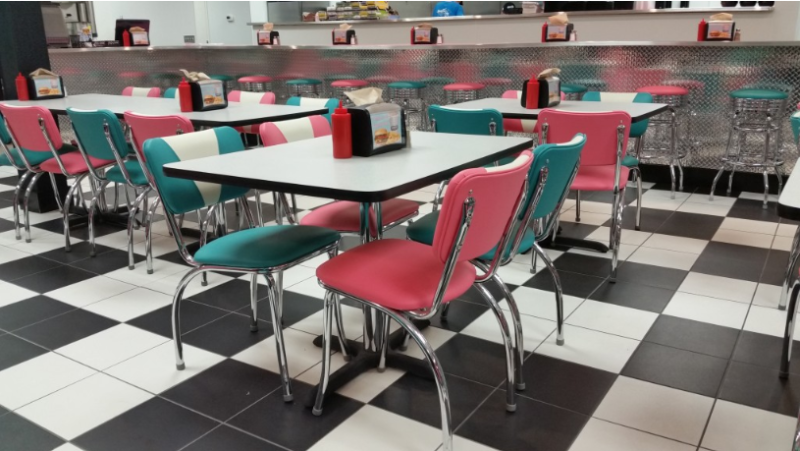Friday, April 24, Gov. Bill Lee issued the first steps from the “Tennessee Pledge,” the state’s rollout of guidance and best practices for Tennessee businesses in 89 of the state’s 95 counties to keep employees and customers safe during the ongoing COVID-19 pandemic. The first industries to receive guidance through the plan include the restaurant and retail industries.
Lee underscored the Tennessee Pledge plan for safe economic recovery is supported by data showing Tennessee’s curve of novel coronavirus infections hitting a plateau. Lee also pointed to the unsettling economic reality COVID-19 has created in our state.
Lee announced Tennessee restaurants are able to reopen Monday at 50 percent occupancy. Additionally, Tennessee retailers are able to reopen on Wednesday at 50 percent occupancy. The state recommends that employees in both industries wear cloth face coverings and that business owners follow federal guidelines for hygiene and workplace sanitation standards related to the pandemic. The full guidance offered by the state for both sectors can be found here.
Restaurant Guidelines
Below are some of the restaurant guidelines. Click here to read more.
Restaurant Employee Protection
- Follow sanitation frequency guidance
- Have dedicated face coverings and dedicated gloves (i.e., only used by one person) worn by all employees, at all times (should not be N-95 or medical variety – these should be saved for use by healthcare workers)
- Require all employees to report any symptoms of illness to supervisor and require notification of COVID-19 positive case in employee’s household
- Provide ServSafe COVID-19 training for all food handlers as soon as possible
Restaurant Consumer Protection
- Limit the number of customers in the restaurant to 50% of seating capacity
- Tables should be spaced at least 6 feet apart
- Limit tables to no more than 6 guests per table
- Mark any indoor or outdoor waiting area so that social distancing standards are met (options can include a text system to alert guests of available seating, an intercom system, or only one member of a party being allowed to wait in the waiting area)
- Bar areas should remain closed
- Live music should not be permitted
- Screen customers for illness upon their entry into the restaurant:
Best practice: Temperature checks for every customer. Customers with temperatures above 100.4 degrees Fahrenheit should not be permitted on premise
Minimum: Question customers regarding COVID-19 symptoms
Have you been in close contact with a confirmed case of COVID-19?
Are you experiencing a cough, shortness of breath, or sore throat?
Have you had a fever in the last 48 hours?
Retail Guidelines
Below are some of the retail guidelines. Click here to read more.
Retail Employee Protection
- Staff should wear face coverings (not N-95 or medical masks, which should be reserved for healthcare workers) and other personal protection items as recommended by the CDC
- Provide training on personal protective equipment based on CDC guidelines
- Provide a sanitizing station such as a wash basin with soap and/or bottle of hand sanitizer
- Stagger shifts, breaks, and meals, in compliance with wage and hour laws and regulations, to maintain social distancing
- Provide regular updates and training for employees about personal COVID-19 mitigation and store safeguards based on CDC guidelines
- Require all employees to report any illness to supervisor and require notification of COVID-19 positive case in employee’s household
- Prohibit congregating in break rooms or common areas and limit capacity of such areas to allow for safe social distancing minimum of 6 feet whenever possible
Retail Consumer Protection
- Limit the number of customers inside a store at a given time, excluding employees and representatives of third-party delivery companies, to 50 percent or less of store occupancy based on Tennessee’s Building and Fire Code
- Customers should wear face coverings inside the store
- Consider dedicate shopping hours or appointment times for the elderly, medically vulnerable, and health care workers
- Establish one-way aisles and traffic patterns for social distancing
- Increase curbside, pickup, and delivery service options to minimize contact and maintain social distancing
- Assign dedicate staff to prompt customers regarding the importance of social distancing
- Add social distancing “reminder” signs, personal stickers, floor decals, and audio announcements
Business Process Adaptations
- Establish enhanced cleaning protocols that follow CDC guidelines including sanitizing shared resources (such as carts) after each use, and sanitizing all high traffic / high touch areas (such as counters check-out lanes, keypads, break rooms, dressing rooms, rest rooms) every two hours and when visibly dirty
- Use a clearly designated entrance and a separate clearly designated exit to maintain social distancing
- Use plastic shields or barriers between customers and clerks at service counters, and clean them frequently (every 2 hours and when visibly dirty)
- Adjust store hours to allow time for enhanced cleaning
- Prohibit the use of reusable bags (reusable bags may carry COVID-19)
- Suspend the sampling of food and personal hygiene products
- Task management-level employees within a store to monitor compliance
“We need Tennessee businesses, workers, and consumers to step up and pledge to follow these guidelines,” Tennessee Department of Tourist Development Commissioner Ezell said. “It is critically important that we maintain our commitment to social distancing and adhere to these new guidelines so that we can continue to reopen our economy.”



















